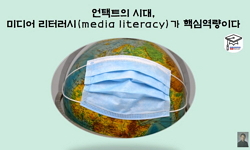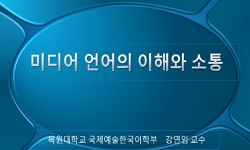우스터 그룹은 80년대 포스트모더니즘 연극의 아이콘으로 간주되어 왔고, 한 동안 해체주의 이론을 전유하며 논의되어 왔다. 그러나 우스터 그룹의 공연을 해체주의 이론 안에서만 살피는 ...
http://chineseinput.net/에서 pinyin(병음)방식으로 중국어를 변환할 수 있습니다.
변환된 중국어를 복사하여 사용하시면 됩니다.
- 中文 을 입력하시려면 zhongwen을 입력하시고 space를누르시면됩니다.
- 北京 을 입력하시려면 beijing을 입력하시고 space를 누르시면 됩니다.
https://www.riss.kr/link?id=A101862493
- 저자
- 발행기관
- 학술지명
- 권호사항
-
발행연도
2016
-
작성언어
Korean
-
주제어
다이올로직 드라마투르기 ; 미디어 ; 브레이스 업! ; 우스터그룹 ; 공간 ; Brace Up! ; Dialogic Dramaturgy ; Media ; Space ; Wooster Group
-
등재정보
KCI등재
-
자료형태
학술저널
- 발행기관 URL
-
수록면
71-115(45쪽)
-
KCI 피인용횟수
4
- DOI식별코드
- 제공처
- 소장기관
-
0
상세조회 -
0
다운로드
부가정보
국문 초록 (Abstract)
우스터 그룹은 80년대 포스트모더니즘 연극의 아이콘으로 간주되어 왔고, 한 동안 해체주의 이론을 전유하며 논의되어 왔다. 그러나 우스터 그룹의 공연을 해체주의 이론 안에서만 살피는 것은 우스터 그룹의 공연을 불가해하고 불안정하며 무정부적 혼돈으로 간주하게 함으로써 공연을 통해 그들이 제기하는 사회적 정치적 이슈를 간과할 가능성이 다분하다. 우스터 그룹이 아방가르드의 죽음을 통과하여 여전히 사회적 정치성을 띤다면, 그것은 무대와 관객 사이에 사회적 의미가 소통되고 있다는 것을 반증한다. 이 글에서 논의하고자 하는 것은 우스터 그룹의 공연 구성 방식에 관한 것과 함께 이를 통해 생성되는 담화 행위이다. 본문 1에서는 우스터 그룹의 공연 구성 방식을 탐색하기 위해 다이올로직 드라마투르기에 대한 논의를 전개하였다. 서로 다른 미디어의 콜라주와 어셈블리지로 구성된 우스터 그룹의 공연은 고전을 텍스트로 하되 대사를 과감하게 축소하고 변형시키면서 다른 미디어의 개입을 활성화시켜 텍스트와 미장센 사이의 균열을 과감하게 촉발한다. 이를 살펴보기 위해 다이올로직 드라마투르기의 관점에서 본문 1은 공연의 구성 요소를 ``텍스트와 텍스쳐``, ``공간과 공간성``, ``비디오의 이미지와 공연이 어떻게 담화를 만들어내는지`` 세 개의 항목으로 나누어 분석하였다. 본문 2의 < 브레이스 업! >에 대한 분석에서는 본문 1에서 구성한 세 개의 논점을 중심으로 작품을 분석하였다. 먼저 텍스트와 텍스쳐에서는 리허설 과정에서 공연의 토대가 된 < 세 자매 >가 어떻게 ``가이닌 극단이 < 세 자매 >를 공연한다``는 콘셉트 아래 배우와 연기, 이미지, 음악과 음향으로 상호작용의 텍스쳐를 만드는지에 대해 살펴보았다. 공간과 공간성의 부분에서는 콘셉트를 토대로 리허설 과정에서 의도하였던 공간 외에 어떻게 공간성이 발생하는지, 무대 공간과 관객이 상호작용하여 구성한 공간성을 통해 어떤 담론이 발생하는지를 살펴보았다. 마지막으로 라이브 공연과 비디오가 어떻게 상호 작용하여 담론을 구성하는지를 살펴보았다. 특히 미디어가 표면에 드러내지는 않지만 함축적으로 내포한 서브텍스트의 기능을 분석하여 이 공연이 궁극적으로 관객에게 소통하고자 하는 담화의 가능성을 탐색해보았다.
다국어 초록 (Multilingual Abstract)
Since its beginning in late 1960s until the mid-1980s , American Avant garde theatre has greatly influenced contemporary theatre beyond American borders, worldwide. Among them, this paper has chosen the Wooster Group and it examine how they have weave...
Since its beginning in late 1960s until the mid-1980s , American Avant garde theatre has greatly influenced contemporary theatre beyond American borders, worldwide. Among them, this paper has chosen the Wooster Group and it examine how they have weaved their theatrical works especially their own dramaturgy. In this, I define the use of dramaturgy as weaving and composing a methodology of theatrical materials to create a semantic structure of theatrical performance. The reason why I have chosen the Wooster Group for my research is because they seemed to get over Richard Schechner`s pronouncement of American avant garde theatre`s "decline and fall". They pursued the direction, as Schechner prescribed, whereby avant garde theatre should turn to, "going beyond the boundaries, to break new ground, where performance is used not only to entertain (to pass the time) but also to serve community-making or analytic or radical revolutionary purposes." Exploring their own methodology, they could bridge neo-avant garde theatre and contemporary post-dramatic theatre as well as contemporary theatre. My paper explores how they got past avant garde`s limitations, achieved the precedence for contemporary aesthetics, and wove untrodden theatrical methodology without sacrificing political implications. To do this, I focus on how they pioneered weaving contemporary dramaturgy that could activate interactions between the different media. But, to get over the aesthetic-oriented media theory in theatre studies, I adopt the concept of Mikail Bahktin`s dialogic imagination to explore the Wooster Group`s dramaturgy, which was imbued with potential discourse. Based on dialogic dramaturgy, I divide their performance making into three constituents of performance: the relationship between text and texture, space and spaciality, and the media`s subtext and inter-text function. First, I lookinto how they dealt with western classics free from textual authority and transformed them into a performative texture. They resisted univocal textuality and dispersed them into texture with other materials, while inducing other texts for the nonlinear structure. Second, I analyse their use of space as they perform special potentials according to their space-turned concerns. They preferred minimal and architectural design and framed the mise-en-scene with its possible spaciality. Lastly, I focus on the possibility of the media with two functions of subtext and inter-text, both of which are imbued with the intention and ideas of the Wooster Group`s dramaturgy. On the one hand, the rebellious attitude against image culture was founded in their dramaturgy as an overall subtext of their itinerary. On the other hand, their use of video and film broke the rules by warping or extorting the images. With the arguments above, my paper tries to examine how multimedia theatre could trigger critical ideas and views accompanying text and technology as in Brace Up!.
참고문헌 (Reference)
1 백로라, "현대공연학이론의 주요쟁점과 미디어테크놀로지 연극-'라이브니스'이론과 우스터그룹의 <햄릿>을 중심으로" 한국연극학회 (34) : 127-158, 2008
2 데이비드 볼터, "재매개: 뉴미디어의 계보학" 커뮤니케이션 북스 2006
3 최영주, "멀티미디어 공연에서 비디오를 활용한 리얼리티 구축하기 -샤우뷔네의 <햄릿>과 리니아 드 솜브라의 <아마릴로>를 중심으로-" 한국연극학회 1 (1): 167-202, 2014
4 레프 마노비치, "뉴미디어의 언어" 생각의 나무 2004
5 Meerzon, Yena, "‘Taming of the impulse’: on The Wooster Group’s acting techniques and methodologies" 4 : 381-398, 2013
6 Aronson, Arnold, "Wooster Group’s L.S.D.(Just the High Points)" 29 (29): 66-77, 1985
7 Paul Schmidt, "Video and First Camera by Christopher Kondek, Reid Farrington" 2003
8 Heuvel, Michael Vanden, "The Wooster Group and Its Tradition" Peter Lang 71-82, 2005
9 Quick, Andrew, "The Wooster Group Work Book" Routledge 2007
10 Rockas, Leo, "The Subtext of Drama" 3 : 28-42, 1976
1 백로라, "현대공연학이론의 주요쟁점과 미디어테크놀로지 연극-'라이브니스'이론과 우스터그룹의 <햄릿>을 중심으로" 한국연극학회 (34) : 127-158, 2008
2 데이비드 볼터, "재매개: 뉴미디어의 계보학" 커뮤니케이션 북스 2006
3 최영주, "멀티미디어 공연에서 비디오를 활용한 리얼리티 구축하기 -샤우뷔네의 <햄릿>과 리니아 드 솜브라의 <아마릴로>를 중심으로-" 한국연극학회 1 (1): 167-202, 2014
4 레프 마노비치, "뉴미디어의 언어" 생각의 나무 2004
5 Meerzon, Yena, "‘Taming of the impulse’: on The Wooster Group’s acting techniques and methodologies" 4 : 381-398, 2013
6 Aronson, Arnold, "Wooster Group’s L.S.D.(Just the High Points)" 29 (29): 66-77, 1985
7 Paul Schmidt, "Video and First Camera by Christopher Kondek, Reid Farrington" 2003
8 Heuvel, Michael Vanden, "The Wooster Group and Its Tradition" Peter Lang 71-82, 2005
9 Quick, Andrew, "The Wooster Group Work Book" Routledge 2007
10 Rockas, Leo, "The Subtext of Drama" 3 : 28-42, 1976
11 Schmidt, Paul, "The Sounds of Brace Up!: Translating the Music of Chekhov" 36 (36): 154-157, 1992
12 Schechner, Richard, "The Decline and Fall of the (American) Avant-Garde: Why It Happened and What We Can Do about It" 5 (5): 48-63, 1981
13 Schechner, Richard, "The Decline and Fall of the (American) Avant-Garde: Why It Happened and What We Can Do about It" 5 (5): 9-19, 1981
14 Giesekam, Greg, "Staging the Screen" Palgrave 2007
15 Jameson, Frederick, "Postmodernism, or, the Cultural Logic of Late Capitalism" Duke University Press 1991
16 Kaye, Nick, "Postmodernism and Performance" ST. Martin 1994
17 Thies-Lehmann, Hans, "Postdramatic Theatre" Routledge 2006
18 Schechner, Richard, "Perspecta 26:Theater, Theatricality, and Architecture" 97-102, 1990
19 Kaye, Nick, "Multimedia: Video, Installation, Performance" Routledge 2007
20 Klich, Rosemary, "Multimedia Performance" Palgrave 2012
21 Ljungberg, Christina, "Media Borders:Multimediality and Intermediality" Peter Lang 81-95, 2005
22 Arratia, Euridice, "Island Hopping Rehearsing the Wooster Group’s Brace Up!" 36 (36): 121-142, 1992
23 Rabkin, Gerald, "Is There a Text on this Stage?" Routledge 319-331, 2002
24 Bell, Pharra, "Fixing the TV: Televisual Geography in the Wooster Group’s Brace Up!" 48 (48): 565-584, 2005
25 Salter, Chris, "Entangled" MIT Press 2010
26 Bleeker, Maaike, "Dramaturgy as a Mode of Looking" 23 : 163-172, 2003
27 King, W.D., "Dramaturgical Text and Historical Record in the New Theatre: The Case of Rumstick Road" 7 (7): 71-88, 1992
28 Cole, Susan Letzler, "Directors in Rehearsal" Routledge 1992
29 Kristeba, Julia, "Desire in Language: A Semiotic Approach to Literature and Art" Columbia University Press 1980
30 Dunkenberg, Kermit, "Confrontation, Simulation, and Admiration" 49 (49): 43-57, 2005
31 McSweeney, K., "Chekhov’s Stories: Effects or Subtexts?" 34 (34): 42-52, 2004
32 Bakhtin, Michael M., "Caryl Emerson and Michael Holquist" University of Texas Press 1981
33 Sellars, Peter, "Breaking the Rules" Theater Communication Group 15-16, 1993
34 Shank, Theodore, "Beyond the Boundaries: American Alternative Theatre" Michigan Up 2002
35 Lecompt, Elizabeth, "Artist Talk"
36 Kaye, Nick, "Art into Theatre" Harwood Academic 1996
37 Aronson, Arnold, "American Avant-garde Theatre: A History" Routledge 2000
38 Champagne, Lenora, "Always Starting New: Elizabeth Lecompt" 25 (25): 19-28, 1981
39 Wooster Group, "About the Wooster Group"
40 Marranca, Bonnie, "A Dictionary of Ideas" 74 : 1-18, 2003
동일학술지(권/호) 다른 논문
-
- 한국연극학회
- 이선형 ( Sun Hyung Lee )
- 2016
- KCI등재
-
- 한국연극학회
- 이경미 ( Kyung Mi Lee )
- 2016
- KCI등재
-
남아프리카공화국 버바텀 연극의 특수성 -핸드스프링 퍼펫 컴퍼니의 < 위비와 진실 위원회 >를 중심으로
- 한국연극학회
- 남지수 ( Ji Soo Nam )
- 2016
- KCI등재
-
도쿄재판의 연극적 형상화 방식에 대한 일고찰 -이노우에 히사시의 도쿄재판 3 부작을 중심으로
- 한국연극학회
- 이성곤 ( Seung Gon Lee )
- 2016
- KCI등재
분석정보
인용정보 인용지수 설명보기
학술지 이력
| 연월일 | 이력구분 | 이력상세 | 등재구분 |
|---|---|---|---|
| 2028 | 평가예정 | 재인증평가 신청대상 (재인증) | |
| 2022-01-01 | 평가 | 등재학술지 유지 (재인증) |  |
| 2019-01-01 | 평가 | 등재학술지 선정 (계속평가) |  |
| 2018-12-01 | 평가 | 등재후보로 하락 (계속평가) |  |
| 2015-01-01 | 평가 | 등재학술지 유지 (등재유지) |  |
| 2011-01-01 | 평가 | 등재학술지 유지 (등재유지) |  |
| 2009-01-01 | 평가 | 등재학술지 유지 (등재유지) |  |
| 2007-07-05 | 학술지등록 | 한글명 : 한국연극학외국어명 : Journal of Korean Theatre Studies Association |  |
| 2007-01-01 | 평가 | 등재학술지 유지 (등재유지) |  |
| 2004-01-01 | 평가 | 등재학술지 선정 (등재후보2차) |  |
| 2003-01-01 | 평가 | 등재후보 1차 PASS (등재후보1차) |  |
| 2001-07-01 | 평가 | 등재후보학술지 선정 (신규평가) |  |
학술지 인용정보
| 기준연도 | WOS-KCI 통합IF(2년) | KCIF(2년) | KCIF(3년) |
|---|---|---|---|
| 2016 | 0.34 | 0.34 | 0.38 |
| KCIF(4년) | KCIF(5년) | 중심성지수(3년) | 즉시성지수 |
| 0.36 | 0.34 | 0.825 | 0.04 |




 KCI
KCI KISS
KISS







